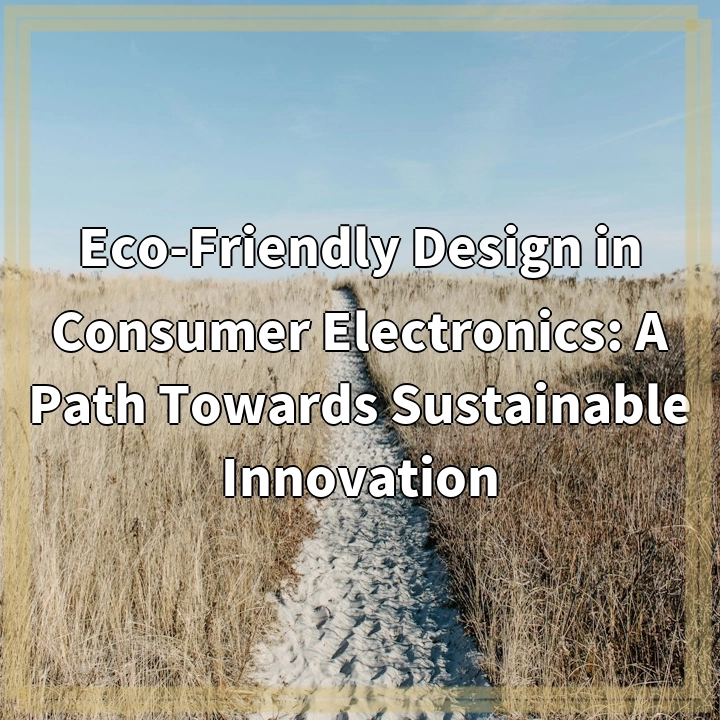
What is Eco-Friendly Design in Consumer Electronics?
Eco-friendly design in consumer electronics refers to the practice of creating electronic devices and appliances that are designed with environmental sustainability in mind. It involves minimizing the negative impact on the environment throughout the entire life cycle of a product, including its production, use, and disposal.
Real-World Problems Associated with Eco-Friendly Design in Consumer Electronics
While eco-friendly design in consumer electronics offers numerous benefits, there are also several challenges and real-world problems associated with its implementation:
1. Limited Consumer Awareness and Demand
One of the major hurdles is the lack of awareness among consumers regarding the importance of eco-friendly design and its potential benefits. Many consumers prioritize features, price, and brand reputation over the environmental impact when purchasing electronics. This limited demand for sustainable products can discourage manufacturers from investing in eco-friendly design.
2. Complex Supply Chains
The electronics industry operates on intricate supply chains that span across different countries and involve numerous suppliers and manufacturers. Ensuring eco-friendly practices throughout the entire supply chain can be challenging. It requires collaboration and strict adherence to sustainable standards at each stage, from raw material extraction to final product assembly.
3. E-Waste Management
The rapid advancement of technology and consumer demand for the latest gadgets contribute to a significant amount of electronic waste (e-waste). Proper disposal and recycling of e-waste is crucial to prevent hazardous materials from entering the environment. However, e-waste management can be complex and costly, and many regions lack adequate recycling infrastructure.
4. Design Trade-Offs
Designing electronics with eco-friendly features often involves trade-offs, such as sacrificing certain functionalities or performance to reduce energy consumption or minimize waste. Balancing sustainability objectives with consumer expectations for high-performance devices can be a challenge for manufacturers.
5. Cost Implications
Eco-friendly design practices may result in additional costs, including investments in research and development, sourcing sustainable materials, and implementing efficient production processes. These costs can impact profit margins, making it important for manufacturers to find a balance between sustainability and affordability.
In conclusion, while eco-friendly design in consumer electronics holds immense potential for sustainable innovation, it also faces real-world challenges. Overcoming limited consumer awareness, addressing complex supply chains, improving e-waste management, managing design trade-offs, and considering cost implications are critical steps towards a more sustainable future in the consumer electronics industry.

Solutions for Eco-Friendly Design in Consumer Electronics
While the real-world problems associated with eco-friendly design in consumer electronics can be daunting, there are several solutions and strategies to address these challenges:
1. Consumer Education and Awareness
Creating awareness about the environmental impact of consumer electronics and promoting the benefits of eco-friendly design is essential. Educating consumers about sustainable options can help drive demand for environmentally friendly products.
2. Collaboration and Supply Chain Transparency
Collaboration between manufacturers, suppliers, and stakeholders throughout the supply chain is crucial to implementing sustainable practices. Transparency in the supply chain can help identify areas for improvement and ensure adherence to eco-friendly standards.
3. Improved E-Waste Management
Investing in proper e-waste management infrastructure and promoting recycling initiatives is essential. Governments and organizations should work together to establish convenient and accessible e-waste recycling programs to reduce the environmental impact of electronics disposal.
4. Innovation and Research
Continued investment in research and development is necessary to overcome design trade-offs and improve the performance of eco-friendly consumer electronics. Innovations in materials, energy efficiency, and recyclability can lead to more sustainable and high-performing products.
5. Cost-Effective Sustainability
Making eco-friendly design financially viable is crucial. Manufacturers should explore cost-effective ways to incorporate sustainable features without significantly impacting the overall cost of consumer electronics.
By implementing these solutions, the consumer electronics industry can make significant progress towards eco-friendly design and sustainable innovation, addressing the real-world problems and paving the way for a greener future.















